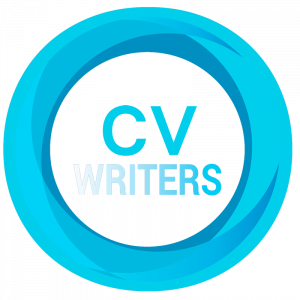
Did you know a recruiter’s preferred method of finding candidates is to not advertise? Advertising jobs is time-consuming, expensive and unreliable. From the confessions of a professional LinkedIn profile writer, read on to learn how to leverage the power of LinkedIn and get head-hunted… Finding candidates without advertising involves two main techniques – “referrals” (candidates recommended by someone) and “head-hunting” (approaching candidates who have not applied for the role). The best way to get head-hunted is with a search-optimised, clear and compelling LinkedIn profile. One that instantly calls out “hire me”. Good LinkedIn profile writing requires leveraging all LinkedIn’s functionality and making sure your content is well written, clear and search-optimised. Here are my most valuable tips for building a LinkedIn profile that will help you stand out in the crowd –
1) Optimise your headline
Your headline is the most important component of your LinkedIn profile. This 240-character line under your name is the main reason your profile will get clicked in a LinkedIn search so you have to get it right. Include your target job titles, specialisations and if you are “available”. Keep it simple and save the flowery stuff for the marketers.
2) Search optimise relevant keywords
There’s a simple formula known by any LinkedIn resume writer – repeat the keywords that a recruiter would use to search LinkedIn if they were recruiting your target role. The more times you repeat the words the better (but don’t go overboard). To work out what those keywords are, pick out job ads that are of interest then think about how a recruiter would use a basic set of key words to find people for that role. Their search would always include the job title and would always include other keywords which could be: industry sector, top technical skills or top soft skills.
Some example keyword searches could be;
“Project Manager residential construction apartments”
“Digital Marketing SEO analytics retail ecommerce”
“Accountant CPA tax BAS manufacturing”
3) Leverage your most valuable real estate
The quickest way to increase your profile’s search rankings is to put relevant keywords in the most valuable sections of your profile. I understand (although this is unconfirmed by LinkedIn) that the four best places to add your top keywords, in order of power, are:
- Headline
- About
- Job Titles (Experience section)
- Experience (role descriptions)
4) Show discretion
Be careful what company-sensitive information you disclose on your profile. Revealing things like budgets and internal problems tend to be frowned upon, both by past and future employers.
5) Overcome plain text
LinkedIn only lets you use plain-text when writing content which means you can’t use bold, underline, bullet points and colour. The way around this limitation is to search Google for a symbol you’d like to use, then copy and paste it into your profile.
My favourites are ► and ★. This is a great resource for all sorts of special characters you can use on LinkedIn. You can copy these into your LinkedIn profile like any letter of the alphabet, using them as bullet points, spacers or decoration. Just keep it professional.
6) Post a professional profile picture
You need a professional looking profile photo. On LinkedIn, your photo can act like a handshake and be the foundation for a first impression. Black and white looks smart. It’s best to wear your work attire and not look too casual – imagine the CEO was visiting your office for the day and would be sitting next to you. The photo should be 400 x 400 pixels and ideally taken by a professional photographer.
7) Use “Advanced Search”
Most people don’t know about the best thing on LinkedIn. Have you used Advanced Search? Just press the “Advanced” button to the right of the search bar and your ability to find the right people just got a whole lot better.
8) Expand your connections
It looks good if you’re connected to people in the industry. In fact, the more the better because it shows a hiring manager or recruiter that you “hang in the right circles”. The goal is to get 500+ connections so your LinkedIn connections counter hits its limit. Before you start blasting everyone with invitations, be aware that LinkedIn will give you a warning, then put restrictions on your account if you invite too many people who say they don’t know you. I suggest:
- Upload your phone and email address books to LinkedIn. LinkedIn will do the rest.
- Go through all your past workplaces and invite anyone who could know your name.
Regarding accepting invitations, your profile is a public web page and is affiliated with a whole industry, not a private community like Facebook. I recommend accepting invitations from anyone who works in your space, be it through industry, technology or related services. Just be wary that some people will immediately send you a sales-related email. Just grin and bear them – it’s one of the costs of having a good LinkedIn profile.
Having an industry standard CV gives you an edge over your competitors when you’re applying for jobs. A picture perfect LinkedIn profile complements a great CV by acting as a quick summary of your personal brand. It also shows that you’re in fact a digitally sound individual, and keen to engage with other professionals. LinkedIn information is in the public domain so having a profile that matches your CV precisely is critical for building trust with prospective employers.
Need a bit of expert intervention to keyword optimise your professional profile and get found by recruiters on LinkedIn? Our LinkedIn profile service will guide you through all of the exact settings and professional tips to help you get head-hunted on LinkedIn by building a profile that is keyword optimised and matches your CV precisely.
